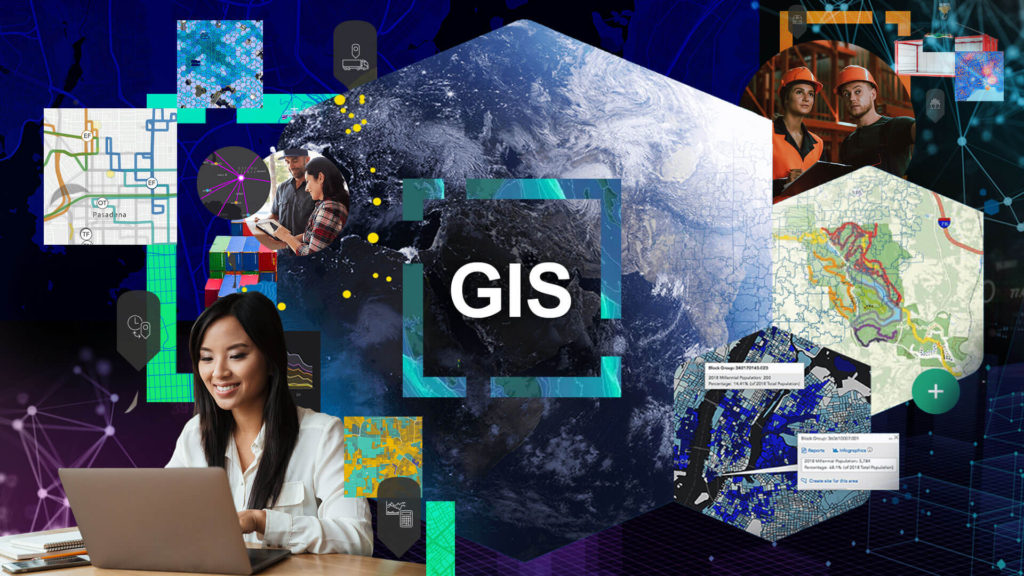Download ESRI ArcGIS 3.0 Pro
Introduction
In the dynamic realm of Geographic Information Systems (GIS), ESRI ArcGIS has consistently stood as a beacon of innovation and functionality. With the much-anticipated release of ESRI ArcGIS 3.0 Pro, GIS enthusiasts, professionals, and novices alike are in for a treat. Packed with a plethora of advanced technical features, ArcGIS 3.0 promises to reshape the landscape of geospatial analysis, visualization, and decision-making. In this blog post, we delve into the key technical features that make ArcGIS 3.0 a true powerhouse in the world of GIS.

Features of ESRI ArcGIS 3.0 Pro
1. Real-Time Data Integration: One of the most significant features of ESRI ArcGIS 3.0 pro is its robust capability to integrate real-time data streams seamlessly. This opens up new avenues for users to monitor and analyze live data feeds, enabling them to make informed decisions with up-to-the-minute information. From tracking moving assets to monitoring environmental variables, the real-time data integration feature empowers users to respond rapidly to changing scenarios.
2. Advanced 3D Visualization: ESRI ArcGIS 3.0 pro takes spatial visualization to the next level with its enhanced 3D capabilities. Users can now create stunning, interactive 3D visualizations of their geospatial data, facilitating better understanding and analysis of complex spatial relationships. The 3D visualization tools allow for immersive experiences, enabling users to virtually navigate through landscapes and urban environments, gaining insights that were previously challenging to achieve.
3. AI-Powered Analytics: Incorporating the latest trends in artificial intelligence, ESRI ArcGIS 3.0 pro introduces AI-powered analytics tools. These tools leverage machine learning algorithms to automatically detect patterns, anomalies, and trends within geospatial data. From predicting urban growth to identifying potential disaster hotspots, these analytics empower users to extract valuable insights from their data, making predictive modeling more accessible and accurate.
4. Enhanced Mobile Capabilities: ESRI ArcGIS 3.0 pro recognizes the growing importance of mobile devices in the realm of geospatial data. With enhanced mobile capabilities, users can seamlessly access, analyze, and share their GIS data on various devices, ensuring that crucial information is always at their fingertips. Field data collection is also streamlined, thanks to improved mobile interfaces, enabling real-time updates and collaboration among field teams.
5. Cloud Integration and Scalability: Embracing the power of the cloud, ESRI ArcGIS 3.0 pro offers seamless integration with cloud platforms, enabling users to store, share, and collaborate on their geospatial projects effortlessly. This cloud compatibility also translates to enhanced scalability, allowing organizations to expand their GIS operations without the limitations of physical infrastructure. This feature proves invaluable for both small-scale projects and large, enterprise-level endeavors.
6. GeoAI for Automated Insights: GeoAI, a groundbreaking feature of ArcGIS 3.0, integrates artificial intelligence with spatial data, unlocking the potential for automated insights. With GeoAI, users can automate the extraction of information from satellite imagery, aerial photographs, and sensor data. This leads to quicker identification of changes in land use, vegetation health, and more. Such automation accelerates the analysis process and empowers users to make informed decisions based on timely data.
7. Collaborative Workflows: ArcGIS 3.0 fosters collaboration by introducing enhanced tools for sharing and teamwork. With real-time collaborative editing, multiple users can work on the same project simultaneously, regardless of their physical locations. This feature promotes efficient workflows, reduces duplication of effort, and ensures that the most recent data is always accessible to everyone involved.
8. Open Data Integration: Recognizing the importance of open data initiatives, ArcGIS 3.0 offers enhanced capabilities for integrating and visualizing open data sources. Users can easily access and incorporate publicly available datasets into their projects, enabling broader insights and analysis. This seamless integration empowers users to tap into a wide range of data sources to enrich their analyses.
9. Customization and Extensibility: ArcGIS 3.0 acknowledges that every user has unique requirements. Its extensible architecture allows developers to create custom tools, extensions, and add-ons, tailoring the software to specific needs. This feature is particularly advantageous for organizations seeking to develop proprietary geospatial solutions or integrate ArcGIS with existing systems.
Conclusion
In conclusion, ESRI ArcGIS 3.0 is a game-changing release that redefines the boundaries of what’s possible in the field of Geographic Information Systems. With an impressive array of technical features, including real-time data integration, advanced 3D visualization, AI-powered analytics, and more, ArcGIS 3.0 empowers users to unlock deeper insights from their geospatial data. This release not only enhances the capabilities of GIS professionals but also invites newcomers to explore the world of spatial analysis and decision-making. Whether you’re monitoring real-time events, crafting immersive 3D visualizations, or harnessing the potential of AI, ArcGIS 3.0 is undeniably a force to be reckoned with in the GIS arena.
If you want to learn ESRI ArcGIS 3.0 at Professional level, please pay a visit to our training videos section, here.
Construction Literacy
WE REPRESENT THE FUTURE OF THE CONSTRUCTION

